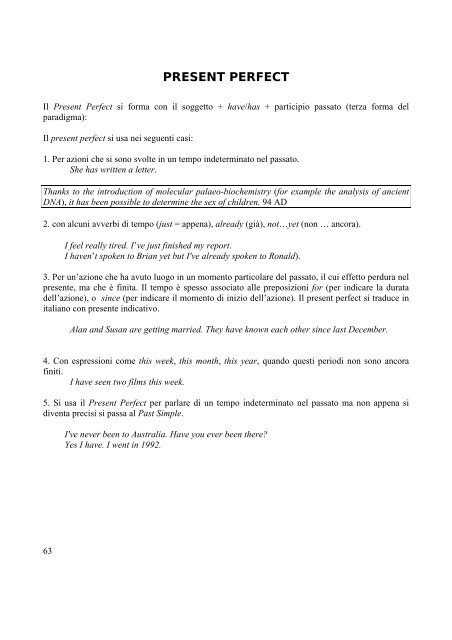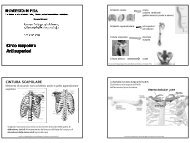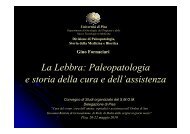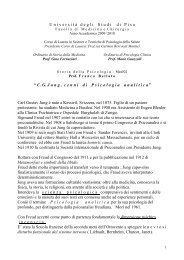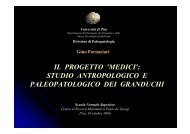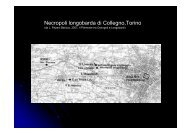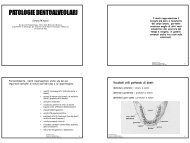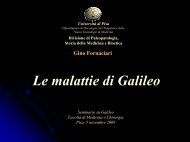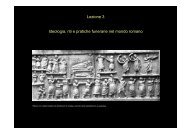Fondamenti della lingua inglese Laura Cignoni - Paleopatologia
Fondamenti della lingua inglese Laura Cignoni - Paleopatologia
Fondamenti della lingua inglese Laura Cignoni - Paleopatologia
You also want an ePaper? Increase the reach of your titles
YUMPU automatically turns print PDFs into web optimized ePapers that Google loves.
63<br />
PRESENT PERFECT<br />
Il Present Perfect si forma con il soggetto + have/has + participio passato (terza forma del<br />
paradigma):<br />
Il present perfect si usa nei seguenti casi:<br />
1. Per azioni che si sono svolte in un tempo indeterminato nel passato.<br />
She has written a letter.<br />
Thanks to the introduction of molecular palaeo-biochemistry (for example the analysis of ancient<br />
DNA), it has been possible to determine the sex of children. 94 AD<br />
2. con alcuni avverbi di tempo (just = appena), already (già), not…yet (non … ancora).<br />
I feel really tired. I’ve just finished my report.<br />
I haven’t spoken to Brian yet but I've already spoken to Ronald).<br />
3. Per un’azione che ha avuto luogo in un momento particolare del passato, il cui effetto perdura nel<br />
presente, ma che è finita. Il tempo è spesso associato alle preposizioni for (per indicare la durata<br />
dell’azione), o since (per indicare il momento di inizio dell’azione). Il present perfect si traduce in<br />
italiano con presente indicativo.<br />
Alan and Susan are getting married. They have known each other since last December.<br />
4. Con espressioni come this week, this month, this year, quando questi periodi non sono ancora<br />
finiti.<br />
I have seen two films this week.<br />
5. Si usa il Present Perfect per parlare di un tempo indeterminato nel passato ma non appena si<br />
diventa precisi si passa al Past Simple.<br />
I've never been to Australia. Have you ever been there?<br />
Yes I have. I went in 1992.


